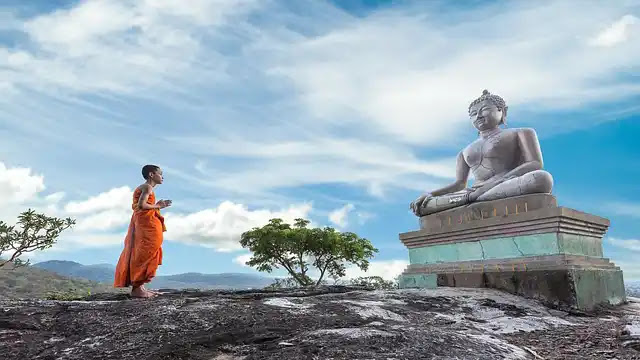Gautama Buddha, also known as Siddhartha Gautama, is a significant historical figure and the founder of Buddhism. His life and teachings have had a profound impact on millions of people around the world. In this article, we will explore 50 fascinating facts about Gautama Buddha, including his early life, journey to enlightenment, teachings, and legacy.
50 Eye-Opening Facts About the Life and Teachings of Gautama Buddha
- Gautama Buddha was born in Lumbini, Nepal, in 563 BCE.
- He was born into a royal family and was known as Siddhartha Gautama.
- His father was King Suddhodana and his mother was Queen Maya.
- According to legend, his mother died just seven days after his birth.
- He was raised by his aunt and father's second wife, Mahaprajapati Gotami.
- He married at the age of 16 and had a son named Rahula.
- At the age of 29, he left his palace and lived as an ascetic for six years.
- He practiced meditation and self-mortification during this time.
- He finally achieved enlightenment at the age of 35.
- He taught the Four Noble Truths and the Eightfold Path.
- He preached the importance of the middle way between asceticism and indulgence.
- He founded a monastic order of Buddhist monks and nuns.
- His teachings spread throughout India and the rest of Asia.
- He is considered the founder of Buddhism.
- His teachings are recorded in the Pali Canon and other Buddhist scriptures.
- He was also known as the Tathagata, which means "the one who has gone thus".
- His followers referred to him as the Buddha, which means "the enlightened one".
- He spent the rest of his life teaching and spreading his teachings.
- He died in Kushinagar, India, at the age of 80.
- His body was cremated and his relics were distributed to various stupas.
- His teachings emphasize the importance of compassion, mindfulness, and non-attachment.
- He believed that suffering is caused by desire and attachment.
- He taught that through meditation and self-reflection, one can achieve liberation from suffering.
- He believed that all beings have the potential to achieve enlightenment.
- He encouraged his followers to question his teachings and to find their own path to enlightenment.
- He rejected the caste system and believed in the equality of all beings.
- He taught that actions have consequences and that one should strive to live a virtuous life.
- He believed in the cycle of rebirth and that karma determines one's future existence.
- He taught that the ultimate goal of life is to achieve nirvana, which is liberation from the cycle of rebirth.
- He believed that one can achieve nirvana through the practice of the Eightfold Path.
- He is considered one of the greatest spiritual leaders in history.
- His teachings have influenced millions of people around the world.
- There are many different schools of Buddhism that have developed since his death.
- The two main branches of Buddhism are Theravada and Mahayana.
- Theravada Buddhism is practiced mainly in Sri Lanka, Thailand, and Myanmar.
- Mahayana Buddhism is practiced mainly in China, Japan, and Korea.
- Vajrayana Buddhism, also known as Tibetan Buddhism, is another major branch of Buddhism.
- Gautama Buddha is often depicted in art and sculpture.
- The lotus flower is a symbol of Buddha and is often used in Buddhist art.
- The Bodhi tree, under which Buddha achieved enlightenment, is also an important symbol in Buddhism.
- Buddha is often depicted with a serene expression and a hand gesture known as the mudra.
- Buddhist temples and monasteries are found throughout Asia.
- Buddhist festivals are celebrated around the world.
- The most important Buddhist festival is Vesak, which celebrates Buddha's birth, enlightenment, and death.
- Buddhist monks and nuns live a simple and austerity-focused lifestyle, practicing meditation and mindfulness.
- The Buddhist concept of karma has influenced many other religions and belief systems.
- Buddhist philosophy has also had an impact on psychology and psychotherapy.
- The Dalai Lama, the spiritual leader of Tibetan Buddhism, is one of the most well-known Buddhist figures in the world.
- Buddhist teachings have also influenced art, literature, and music.
- Today, Buddhism is practiced by millions of people around the world and continues to have a significant impact on society and culture.
From his humble beginnings as a prince to his ascetic life as a wandering monk, Gautama Buddha's story is full of wisdom and inspiration. Through his teachings on the Four Noble Truths and the Eightfold Path, he showed the path to enlightenment and inner peace. Today, his legacy lives on through the millions of people who continue to follow his teachings and practice Buddhism around the world. The 50 facts presented in this article are just a glimpse into the remarkable life and teachings of Gautama Buddha.














0 Comments